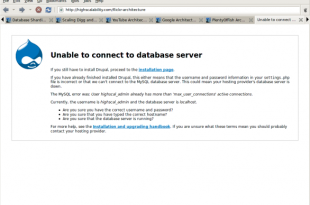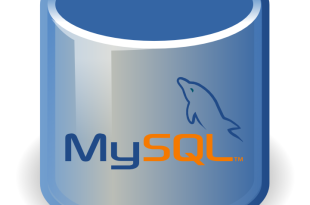Intel processors have a variety of names, and there is no shortage in the number of variations. When you are looking to lease or purchase a server, this can be confusing. On the current market, you may find servers with Intel’s Core 2, Celeron, Xeon, and the newer Core i7. …
Read More »Troubleshooting Database Connections
When MySQL works correctly, it can be a thing of beauty, but when something goes wrong, it can drive you mad. Here are a few things you can do to troubleshoot connection problems: 1. Make sure your username and password are correct. 2. Double-check the hostname. Although “localhost” works on …
Read More »How to Delete Tables and Rows in MySQL
As I mentioned in a previous MySQL post, knowing how to quickly perform database tasks from the command line is a good idea if you are a Linux system administrator. Sometimes, it is the easier way to get things done, especially if you are helping another user and need root …
Read More »Configuring PHP: php.ini and phpinfo
With your own dedicated server, many of the configuration tasks fall squarely on your shoulders. PHP is no exception. Most of the PHP configuration settings are found in the php.ini file, which is often located in /etc/php.ini on Linux servers. You must edit the file as root, and any configuration …
Read More »How to Search a MySQL Database
With web-based control panels and web software like phpMyAdmin, you have numerous options available for searching a MySQL Database. If the need should ever arise where those tools are not available, however, it is a good idea to know how to search a database from the command line. To search …
Read More »How to Connect via SSH
SSH secure iconSSH stands for Secure Shell and is a secure encrypted method of connecting to a server for shell/command line access. It can be useful for shared hosting, virtual private servers, and dedicated servers. Linux server usually come with SSH enabled by default, although some web hosts may disable …
Read More »How to Connect via FTP
FTP iconFTP stands for File Transfer Protocol and is the most widely accepted method for uploading files to a web server. All web hosting companies offer FTP service, but there may be slight differences in how you connect to them. To begin, you will need an FTP client, such as …
Read More »MySQL Optimization: Part 2
1. Query cache – On most servers, there are certain MySQL queries that you and/or your scripts will run more often than others. In fact, you may run the same query hundreds or even thousands of times in a single day. The query_cache setting will save the most used queries …
Read More »Using GZIP for Faster Websites
Good webmasters and system administrators are always looking for ways to increase efficiency and create faster websites. While much of website speed depends on the speed of the server, network connection, and the design of the site, there are other software tweaks that can add some zip to your site. …
Read More »Apache HTTP Server Optimization: Part 3
StartServers You have already configured Apache to control the number of child processes to keep running. This directive will tell Apache how many to start initially when your server first boots. Depending on the level of traffic you expect to get, this number may be low or high. For general …
Read More » Internetblog.org.uk Web hosting, Domain names, Dedicated servers
Internetblog.org.uk Web hosting, Domain names, Dedicated servers


